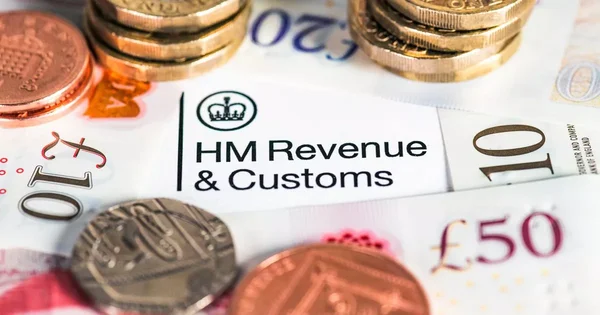Introduction to Adjusting Tax Payments

Navigating the complexities of UK tax payments can be daunting, especially when you anticipate a reduced income for the upcoming year. Adjusting your estimated tax payments with HMRC (Her Majesty's Revenue and Customs) is crucial to avoid overpaying and keeping your finances in order. Fortunately, with the right strategies and tools, this process can be straightforward and hassle-free.
In this guide, we will explore the steps and considerations necessary to adjust your estimated tax payments accurately. By the end of this article, you'll be equipped with the knowledge to handle tax adjustments effectively, ensuring you pay only what is required based on your adjusted income projections.
Understanding HMRC Estimated Payments
HMRC requires self-employed individuals to make estimated tax payments based on their projected income. These payments help spread the cost of your annual tax liability, preventing a large lump sum at the year-end. Always ensure your estimates are as accurate as possible to avoid penalties.


Why Adjusting Payments Matters
Adjusting your estimated tax payments if your income decreases is essential. It prevents overpayments, ensuring that your cash flow remains optimal, letting you utilise funds in areas where they are most needed without waiting for refunds.

The UK government's standard rate for income up to £12,570 is 0% (Personal Allowance). Earnings between £12,571 and £50,270 are taxed at 20%. These rates ensure you estimate your tax correctly based on current thresholds.Key Rates for 2023/2024 Tax Year

In 2022, 23% of self-employed workers faced penalties for underpaying estimated taxes. Avoiding such penalties requires vigilance in adjusting your payments accurately, ensuring compliance with HMRC regulations.Penalty Statistics

Steps to Adjust Estimated Tax Payments
To adjust your estimated tax payments with HMRC, start by gathering all necessary financial records, including past tax returns and income statements. Submit a revised estimate through the HMRC self-assessment portal, detailing your expected income. The system recalculates your future payment amounts, adjusting your financial plan accordingly.
Using tools like the Pie Tax App can simplify this process. The app allows seamless data integration, automating much of the calculations and paperwork, ensuring your revised estimates are accurate and compliant.
Seeking Professional Help
If you're unsure about managing these adjustments, consulting a tax expert is wise. Expert tax assistants available on the Pie app can provide personalised advice. They help verify your calculations, ensuring you meet all requirements while optimising your tax payments.
Using professional services adds a layer of accuracy and compliance, reducing the risk of errors and penalties. Their insights are invaluable in navigating the complex tax landscape, especially when significant income changes are involved.

Tax Tips for Adjusting Payments

Update Regularly Adjust your estimated payments quarterly, reflecting any income changes to stay accurate.

Use Technology Automate calculations with reliable tax software like the Pie Tax App.

Seek Advice Don't hesitate to consult tax professionals for personalised assistance.

Fun Fact About HMRC
Did you know that HMRC was established over 175 years ago? Originally known as the Inland Revenue, it merged with HM Customs and Excise in 2005 to form the modern-day HMRC, overseeing the UK's tax collections and economic regulations.
Managing Adjustments Efficiently

Begin by reviewing your previous year's income and tax liabilities. Use your bookkeeping records to estimate your future income. If there's a notable decrease, adjust your estimated payments accordingly. This proactive approach prevents overpayment and ensures liquidity.
Leveraging the Pie Tax App can streamline this process. Its robust features offer comprehensive insights, ensuring your tax adjustments are precise and compliant. The app’s expert assistance is an added resource ensuring accuracy and compliance with HMRC regulations.

Keeping a close eye on your financial health throughout the year is vital. Regularly compare actual earnings against forecasts. Use discrepancies to refine your estimates. This ongoing process helps maintain accurate tax payments, avoiding surprises at year-end.Monitor Financial Health

Staying informed about tax law changes ensures compliance and optimises your tax situation. Resources like the Pie Tax App provide updates and expert advice, keeping you aligned with the latest regulations and best practices.Continuous Education
Summary
Adjusting your estimated tax payments with HMRC when predicting a reduced income is essential for maintaining financial balance and avoiding overpayment. Steps include thorough income estimation, using reliable tax tools, and seeking professional advice. The Pie Tax App is an excellent resource for simplifying this process, offering accuracy and expert support. Regular monitoring and staying informed about tax changes further enhance compliance and efficiency.
By following these guidelines, you can effectively manage your tax obligations, ensuring that you only pay what is necessary based on your income projections. For more information regarding balancing payments, please visit our website, Tax Pible or click the links - Understanding Balancing Payments in the UK / Understanding Balancing Payments for Sole Traders
Frequently Asked Questions
How often should I review my estimated tax payments?
Quarterly reviews are recommended to ensure accuracy and align payments with current income levels.
Can I get a refund if I overpay my estimated taxes?
Yes, HMRC allows refunds or offsets for overpayments, which can be applied to future tax liabilities.
Are there penalties for underpaying estimated taxes?
Yes, penalties may be imposed if your payments fall below the required threshold. Accurate estimates and regular adjustments are key to avoiding these.
How does the Pie Tax App assist with tax adjustments?
The app automates calculations, submits revised estimates, and offers expert advice, ensuring accuracy and compliance.
What should I do if my income projections change drastically?
Reassess and submit new estimated payments through HMRC’s self-assessment portal to reflect these changes accurately. By understanding the importance and process of adjusting your estimated tax payments, you can better manage your financial health and avoid common pitfalls associated with inaccurate tax estimates.











